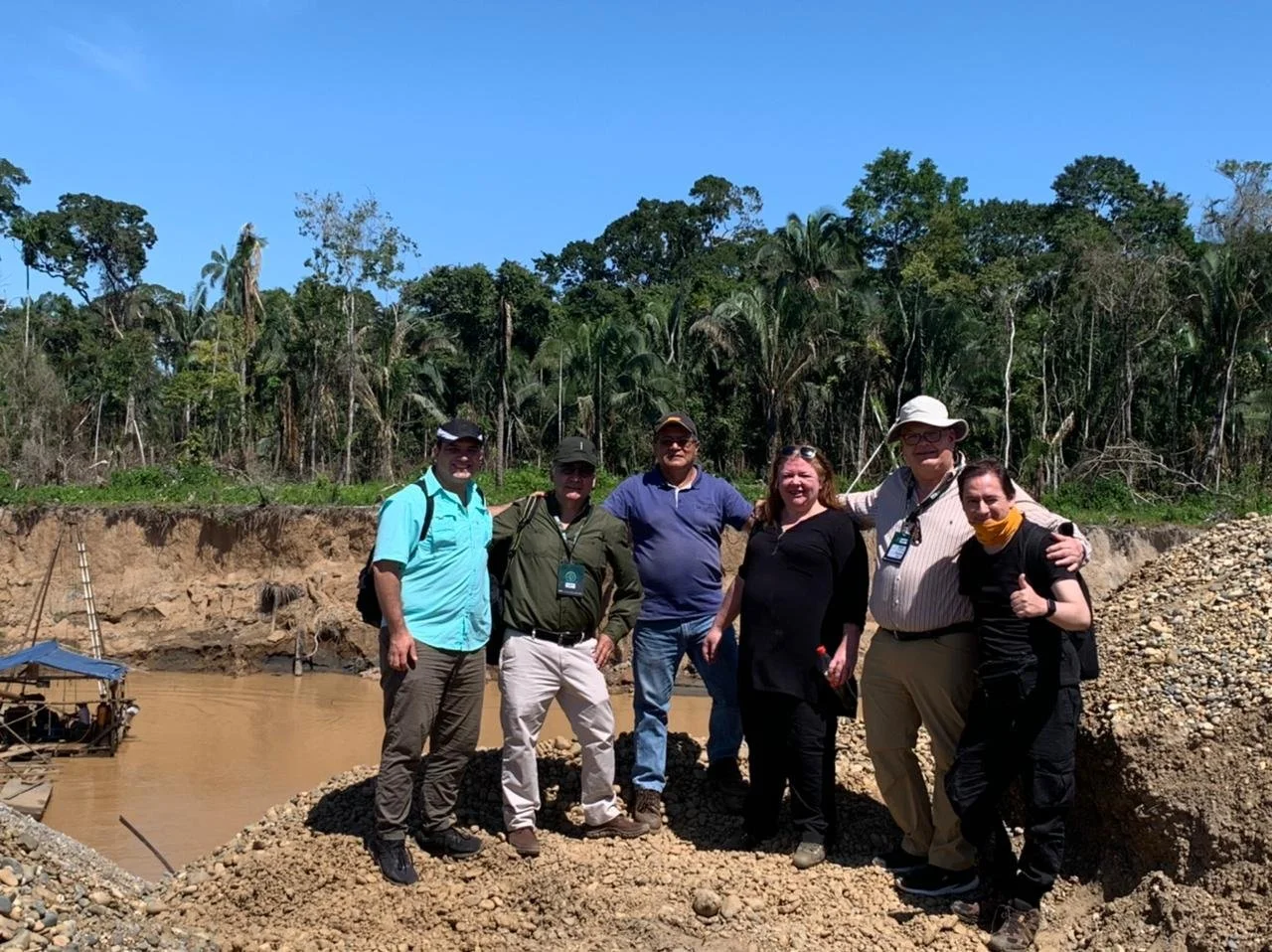Evaluating the true cost of mining heavy metals
By Dr Leigh Cassidy, Lead Scientist, SEM
Pictured: Dr Leigh Cassidy, Lead Scientist, on-site in the Peruvian Amazon with other contestants of the Artisanal Grand Mining Challenge.
Addressing heavy metal pollution is one of the most hotly contested areas of environmental research. Several individual treatments, namely, physical, chemical, and biological are being utilised to remove heavy metals from the environment – but they all face challenges in terms of sustainability, expensiveness and in-situ treatment failure.
Heavy metals are regarded as significant environmental pollutants due to their high density and toxicity, even at low concentrations. Their removal and recovery from waste materials is necessary to protect our planets ecosystem and natural resources. SEM have long been champions of metal recovery from liquid waste streams, implementing our DRAM filtration technology to ensure regulatory compliance for effluent discharge.
Of late, we’ve shifted our focus to the recovery of precious metals from waste electronics. In partnership with the University of Edinburgh, the project funded by IBioIC, has been extremely successful and remarkably efficient.
So why stop there? I began researching mining of metals and rare earths, only to discover that there were moves afoot to begin undersea mining for these commodities. Historically, the high cost, difficulty and risks associated with conducting mining operations at the depths of our oceans have been barriers to pursuing deep-sea mining. But technological advances in mining equipment and the sky-rocketing value of precious metals used in consumer electronics are intensifying mining operations down below water.
The environmental impact of such practices can be catastrophic. From the destruction of natural landforms and the wildlife that they inhabit, to noise pollution and environmental contamination, I could go on…
My research also led me to discover how inefficient standard mining extraction techniques are, with many mining operations focussing on areas where the concentration of metal is as little as 1g per tonne of ore/soil. Many practices also solely focus on extracting one type of metal, despite many of the ores containing multiple valuable metals. As a result, these coincidental metals then end up in tailing ponds, the waste products from mining practices, bringing greater risk of environmental contamination.
The way tailings are handled can have a long-term impact on economic efficiency as well as on community well-being and ecosystem sustainability. By developing long-term sustainable solutions, like DRAM, to recover, recycle and inject metals from tailings back into the supply chain we can maximise metal recovery whilst saving around 20 tonnes of CO2 and 30 tonnes of water per tonne of metal extracted.
Recognising that metals are the ultimate recyclable commodity, SEM are currently working on a number of projects, including taking part in The Artisanal Grand Mining Challenge based in the Amazon, where DRAM seeks to provide the ultimate environmental solution to transform Artisanal and Small-Scale Mining (AGSM). Our other projects include the recovery of Niobium from wind turbine blades and the extraction of Tantalum from advance alloys. To find out more about our projects, get in touch at info@sem.world.


